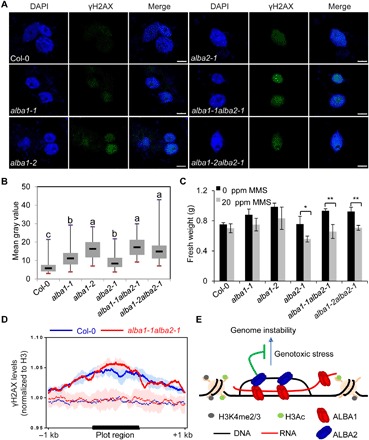Fig. 4. Depletion of AtALBA1 or AtALBA2 results in plant hypersensitivity to MMS.

(A) Representative microscopic images showing γH2AX foci formation (green) in Col-0, alba1-1, alba1-2, alba2-1, alba1-1alba2-1, and alba1-2alba2-1 plants treated with 50 ppm of MMS. γH2AX foci were detected by immunostaining using an anti-γH2AX antibody. Nuclei were stained with DAPI (blue). Scale bars, 5 μm. (B) Box plots showing the signal intensity of γH2AX foci per nucleus for Col-0 plants and the indicated mutants. The γH2AX signal intensity was analyzed by ImageJ software. Dark horizontal line, median; edges of boxes, 25th (bottom) and 75th (top) percentiles; whiskers, minimum and maximum gray values. The multiple comparison was calculated with Kruskal-Wallis. The α parameter by default is 0.05. Post hoc test used the criterium Fisher’s least significant difference. The adjustment methods include the Bonferroni correction and others. (C) Fresh weights of 14-day-old Col-0 seedlings and the indicated mutant seedlings grown on 1/2 MS medium supplemented with 0 or 20 ppm of MMS. The fresh weights of 120 seedlings were statistically analyzed. SEs were calculated from three biological replicates; *P < 0.05, **P < 0.01 (two-tailed Student’s t test). (D) Metaplot of γH2AX accumulation in AtALBA1-bound regions (solid lines) versus randomly selected regions (dash lines) in Col-0 and alba1-1alba2-1 after MMS treatment. (E) A working model for the role of AtALBA1 and AtALBA2 in R-loop biology. AtALBA1 and AtALBA2 form a heterodimer or heteropolymer and bind R-loops at genic regions with active histone marks. By occupying R-loops, AtALBA1 and AtALBA2 protect R-loops from DNA damage and help maintain genome stability.
